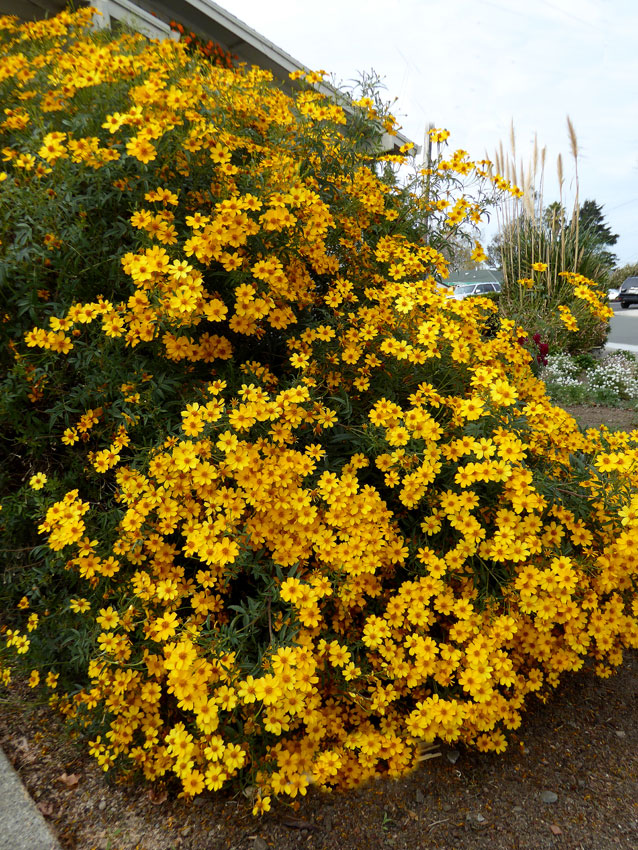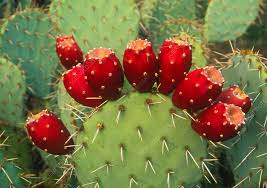Landscape and Vegetation
You probably already can assume the landscape of the Serengeti National Park from public knowledge – it is mostly the savannah with a diverse habitat population (3). The savannah landscape consists of woodlands, marshes, kopjes (kop-EEZ), plains, and grasslands (3). Did you know that the savannah is capable of supporting a higher density of animals AND it takes up 25% of the Earth’s land surface? (3)
The Serengeti plains extend to the southern third of the park, for the purpose of the Great Migration (3). The wildebeests move from south to the plains rains after spending time in the dry season to wetter north of the Serengeti (3).
3 million years ago volcanic ash blown from the Ngorongoro highlands encompassed the plains and formed a calcareous hardpan less than a meter below the soil surface, making the roots and the soil dry out which is why there are no trees in the plains (7).
A large amount of grass grows between trees in the woodlands, which leaves it vulnerable to seasonal bushfires (8). These large grassland meadows are called ‘mbugas’ in Kiswahili with animals such as elephants, topi, giraffes, buffalo, warthog, and impala (8).
A rare habitat within the Serengeti National Park is the riverine forests (12). Large rivers flow and flood during the wet season, especially since most of the time it is dry (12). Broad-leaved evergreens have a chance to grow due to these rivers holding so much water in dense forests, another aspect that provides a home for many other plants, birds, insects and wildlife (12).
Learn more about the Savannah’s landscape and vegetation here
Trees
Sausage Tree (Kigelia africana)
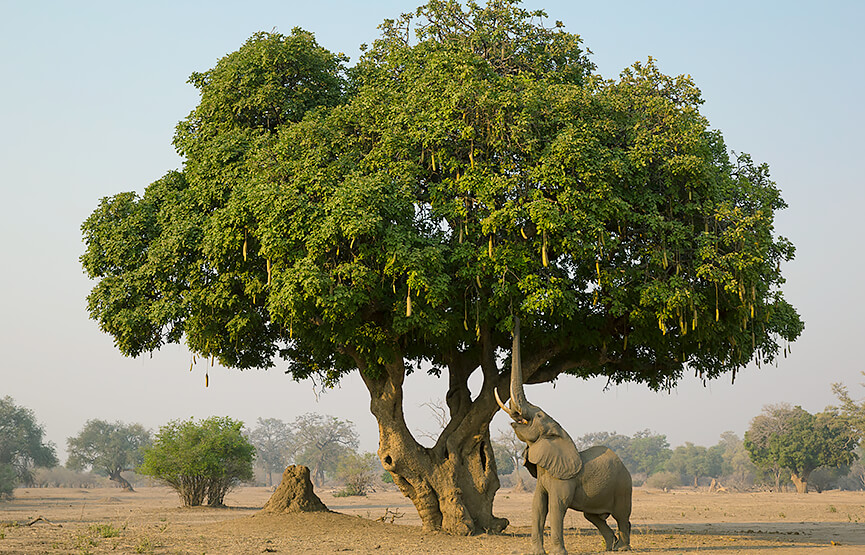
The Sausage Tree is solely found near the dry river banks in the Serengeti!(3) Did you know that the Sausage Tree produces succulent, 50 centimeters and poisonous fruits that drop from the trees and release seeds as the pulp rots? (3). These fruits can be seen for months after they’ve been dropped but they’re usually mistaken for a leopard tail! (3).
Fig Trees (Ficus sp.)
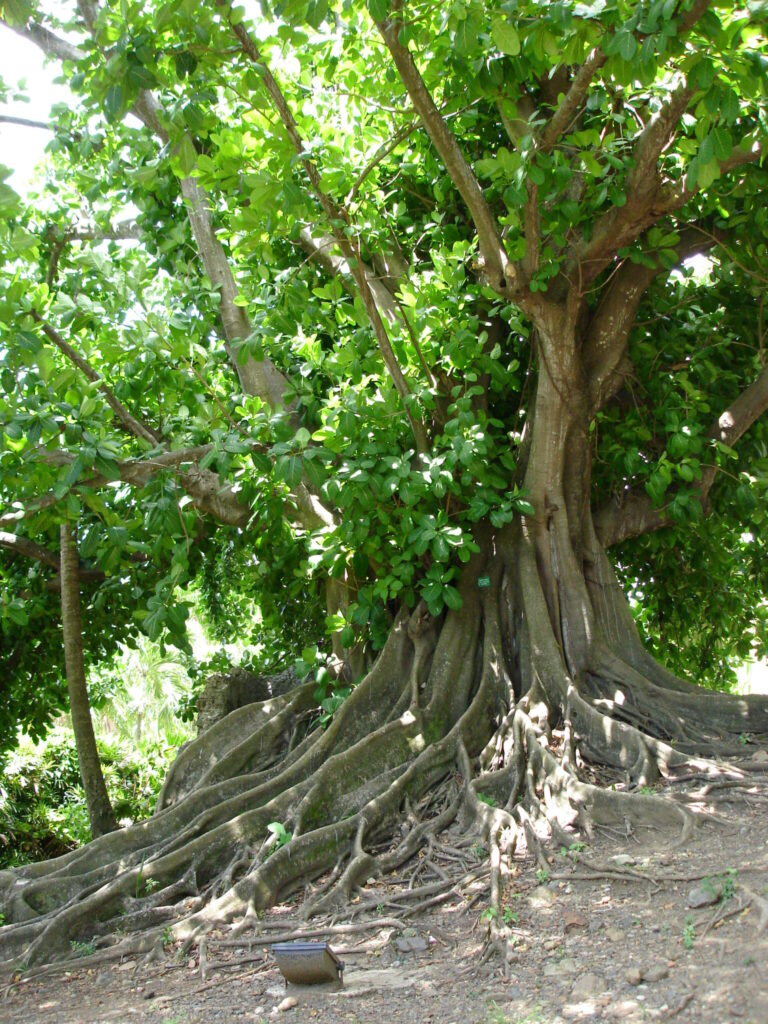
Fig trees come in a large diverse variety along with their distinctive gray smooth bark, along with large buttressing intertwined roots and saucer-sized dark green leaves (4). These features make the fig trees very easy to identify (4). Unlike the Sausage tree, Fig trees are found in moist river banks or they grow in the rocky shafts of kopjes (Kop-EEZ) (4).
Wild Date Palm (Phoenix reclinata)
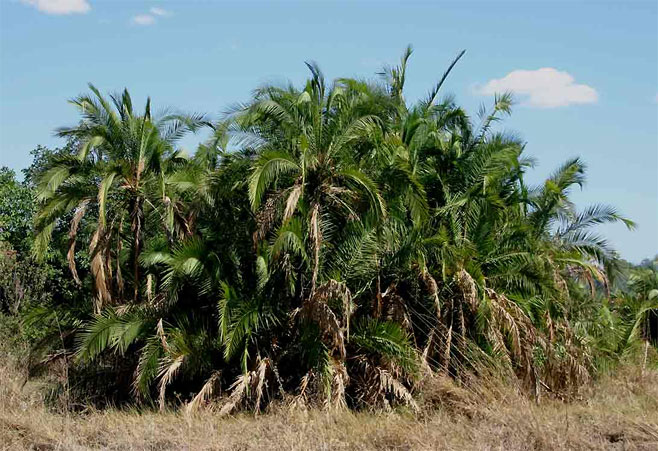
These tree species are monocotyledons because the leaves in their veins are parallel and unbranched which makes them distant relatives to bananas, orchids, grasses, and lilies (5). Found along rivers and swamps, the Wild Date Palm tree is the most common species of Palm trees in the Serengeti National Park (5). The tree offers shade to the big car species in the Serengeti, lions of course! Another fun fact is that the sugary sap from these trees can be made into Palm wine (5). However, the fruits are edible but they apparently taste horrible! (5)
Commiphora (Commiphora africana)

Dominant in the eastern section of the Serengeti National Park, the papery blue/yellowish bark and small roundish leaves leave the Commiphora distinguished from Vachellia (Yellow Fever tree) (6). African myrrh or Commiphora africana trees are the most common of the Commiphora species and serve as essential parts of providing sustenance for medicine with the help of the Commiphora’s roots, berries, and bark (6). The medicine helps relieve liver problems, stomach issues, and rashes! (6).
Yellow Fever Tree (Vachellia xanthophloea)
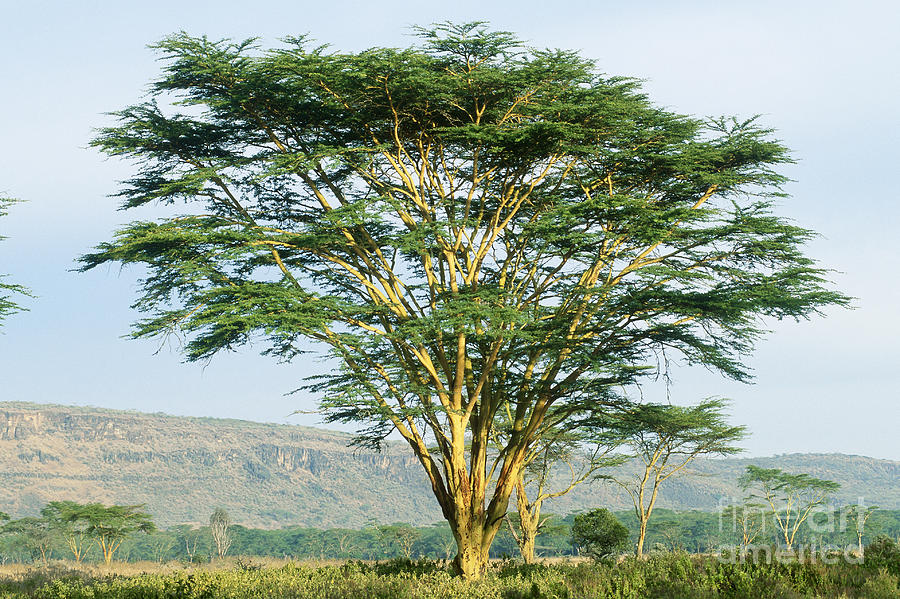
Just like the Wild Date Palm trees, the Yellow Fever tree is found in wet areas near rivers, swamps and foodplants (7). Did you know that the Yellow Fever tree got its name because early settlers pointed to the origins of malaria to the yellow trees growing nearby the water, rather than the mosquitos even though they had noticed that their fevers were due to their exposure to the water! (7) Regardless, the “Yellow Fever Tree” was named after their fevers, as much as the tree distinguishes itself from others with its large white thorns, wide-stretching branches, and yellow bark (7).
Umbrella Tree (Vachellia tortilis)
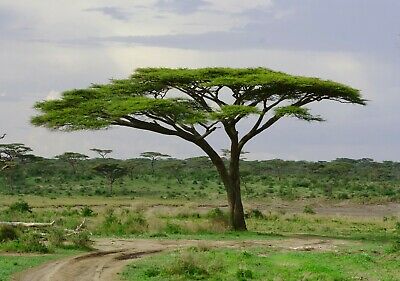
With a distinguishable flat top, dark bark, and white thorns, the Vachellia tortilis arches over the savannah in the Serengeti National Park (8). This tree is the representation of Africa and provides seedings for elephants and giraffes to feed (8). Did you know that most umbrella trees in the Serengeti are 45 to 125 years old? (8) However, these umbrella trees are highly vulnerable to bushfires, so these trees have been able to establish a masse twice in the last 125 years (8).
Whistling Thorn (Vachellia drepanolobium)
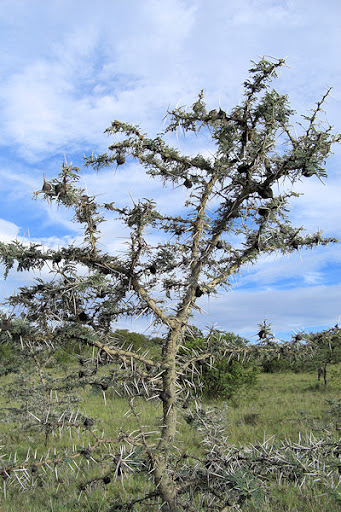
Full of ants, this tree with hard, hallow spheres encourage ants to shelter and feed in it with its ‘extrafloral nectaries’ (special flower-like structures) in exchange for protection, what we call a symbiotic relationship (9). This tree gets its name from the very ants that make whistling sounds while going through the entrance holes into the hollow galls (9). These trees grow everywhere there is soil with good water saturation! (9)
Grasses
Red Oat Grass (Themeda triandra)
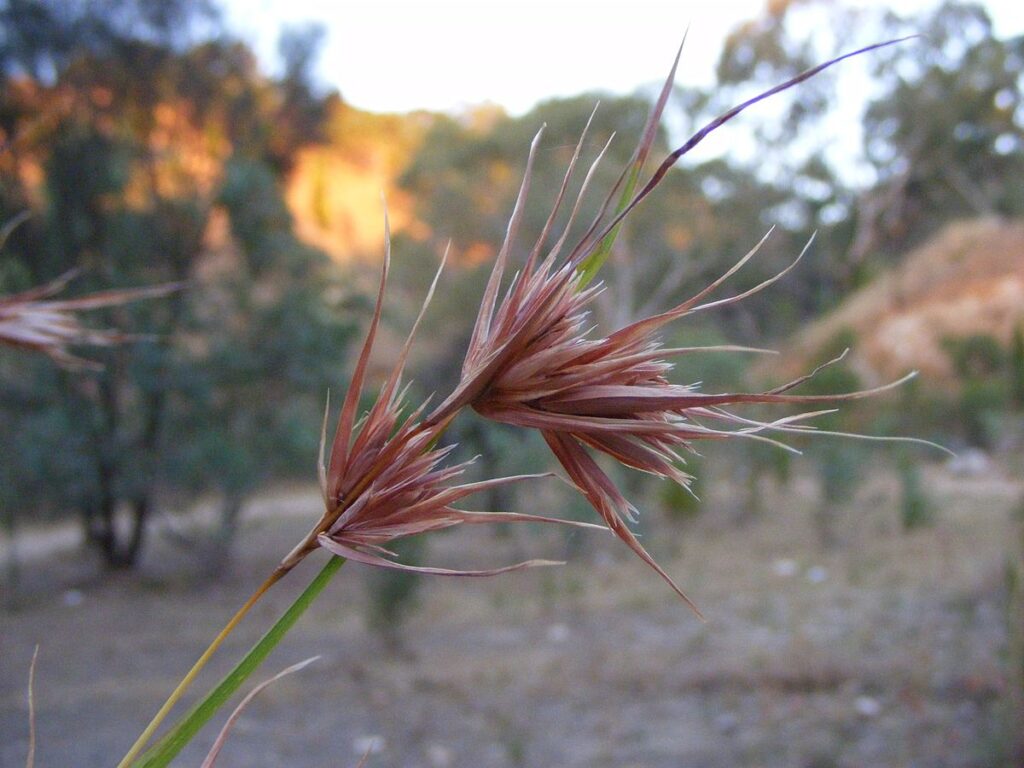
One of the dominant grass species in the woodlands, and the long grass plains of the Serengeti, this red-pinkish red-grass (as it dries), grows very thick like a field of wheat (10). Wildebeests generally feed on their fat fan-like seeds but only when there are other grasses with exhausted consumption (10).
Finger Grass (Digitaria macroblephora)
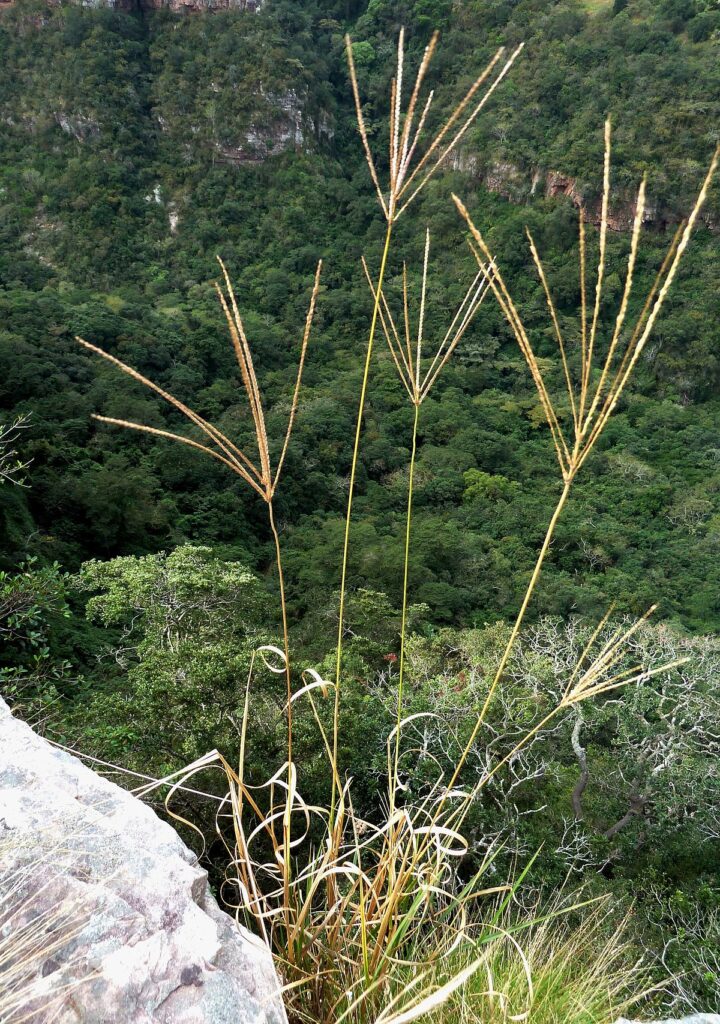
Most common grass in the Serengeti, this grass species is preferred by many gazelles (11). The features of this grass are the seed heads that look like thin fingers pointing up at the sky (11).
Pan Dropseed (Sporobolus ioclados)
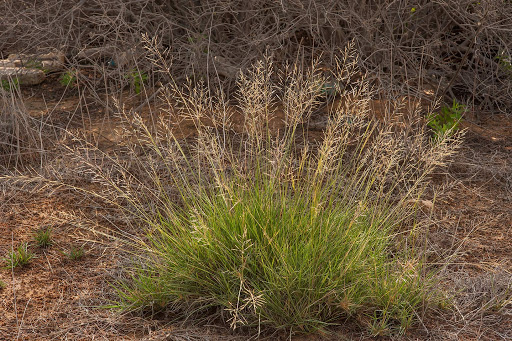
Alongside the finger grass, this species is another dominant species of the Serengeti National Park’s short-grass plains (12). However, it is hard to distinguish them from one another because they grow in a dwarf form (12).. Can you identify the seedhead of the Pan Dropseed as shaped like a Christmas tree with seeds dangling below like ornaments? This makes the Pan Dropseed distinctive from other grasses! (12).
Invasive plant species
Invasive plants that push away the vegetation grown in the Serengeti create many problems, the Mexican Marigold is a good example (13). This plant was introduced in the Serengeti with a shipment of wheat seeds and because it is a fast-growing weed, it makes the agricultural environment infertile and competitive to the other crops and native plants (13). There are also species such as the Prickly Pear (Opuntia sp.), and Custard Oil (Rhoicissus sp.) that post a threat of non-endemic changing the vegetation of the Serengeti National Park, leading to a domino effect of altering wildlife behaviors as well (13). These plants are most commonly seen in roadside areas where the movement of vehicles disperse the seeds (13).
